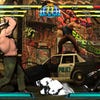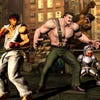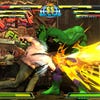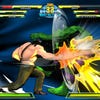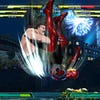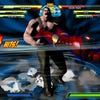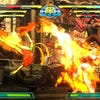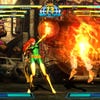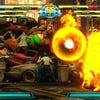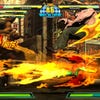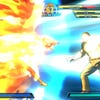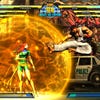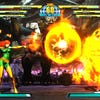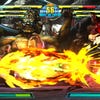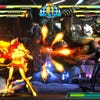Marvel vs. Capcom 3
Flight club.
Street Fighter IV is the Beethoven's Fifth of fighting games. All weighty drama, considered changes and measured movements, it's an experience that heaves and builds to a studied climax. There are fireworks and flames, sure, but they are yoked to tradition, and for all the screen-filling Ultra finishes the game maintains a Ryu-like distinguished grace.
Marvel vs. Capcom 3, by contrast, is the Flight of the Bumblebee. Fast-moving and skittish, it creates its drama by bamboozling the mind with blink-and-you'll-miss-it florid action. The tradition here belongs to comic books, not martial arts, and Capcom's artists have been egged on to create ever more outlandish, screen-filling, Wolverine *KAPOW*.
Historically, the Marvel vs. Capcom series has been viewed as a light-hearted enterprise, an upbeat crossover to entertain the Westerners. Certainly this was true of the first arcade release, a game intended to introduce Capcom's poster boys and girls to comic book fans, and not much else.
But with the second game, thanks to the original title's popularity in the States, Capcom increased the complexity to turn a throwaway fighter into something worthy of tournament play. The shift was best exemplified by Magneto, by far the most technical character in the game, around whom high level play began to revolve.
Fast forward to 2006, and Yoshinori Ono convinces Capcom's top brass to let him start work on a new Street Fighter. Ono is paired with Ryota Niitsuma, and the two work together on creating the fighting game that will go on to spark a revival in the genre.
But, according to Capcom insiders, at some point, the two fall out. Niitsuma leaves the Street Fighter team to begin work on Tatsunoku vs. Capcom, while Ono starts work on Super Street Fighter IV. Following the success of his Wii project, Niitsuma is offered the chance to do to the Marvel vs. Capcom series what Ono was allowed to do to Street Fighter: update it for a contemporary audience.
Why is this petty company rivalry relevant? Because it goes some way to explaining why Marvel vs. Capcom 3, far from being a throwaway distraction, has been turned into a deep and complex fighter. Sure, there is an immediacy to it, an emphasis on simple-to-execute special moves that can give the impression of shallowness. But underneath the hood this is a complex beast, intended by its creator to stand toe-to-toe with Capcom's other great fighter in the ring.
That said, the two are very different. While Marvel vs. Capcom 3's vocabulary consists of Hadouken quarter circles and Shoryuken zigzags, the grammar and phrasing is completely new. Players hoping their Street Fighter IV game will be transferable will leave disappointed. Marvel vs. Capcom 3 requires you to go back to basics and – if you want to do anything more than splash around in the shallow end – re-build your game from the ground up.
As in the previous titles in the series, at a basic level play revolves around light to medium to hard combos. Land a light attack and you almost always follow up with a medium and then hard attack, and the sooner you learn to perform this piano finger arpeggio on instinct, the sooner you'll move towards proficiency.
A simple combo can usually be finished with a tap of the launch button, which will send your opponent into the air. Jump up after them and you can continue with a string of airborne attacks before rounding off with a special meter-draining Hyper Combo attack, or, alternatively, a tap-out to one of your other characters, who is able to continue the combo.
In this three-on-three fighter, you can either call on one of your back-up characters to pop in for a momentary attack by tapping their respective button, or tag them in to continue the fight by holding it down. As you fight you incur two types of damage: normal damage and red damage. Tag a character out and their red damage will replenish while they are 'sitting on the bench', so making careful use of your characters over the course of a match is a key tactical consideration.
Many basic attacks share the same input motions across the full roster of 36 characters, particularly the Hyper Combos, Marvel vs. Capcom's take on Street Fighter IV's Ultras, of which each character has numerous variations. The simplification of move sets and the reduction in the number of attack buttons from Marvel vs. Capcom 2's four down to three are changes intended to broaden the game's accessibility.



